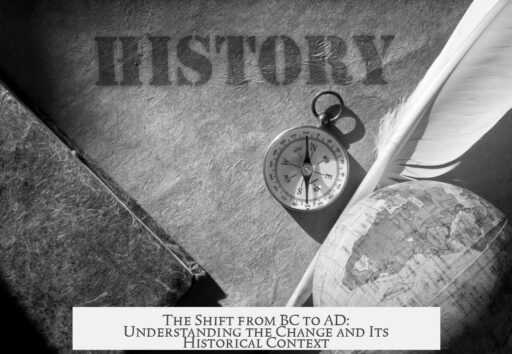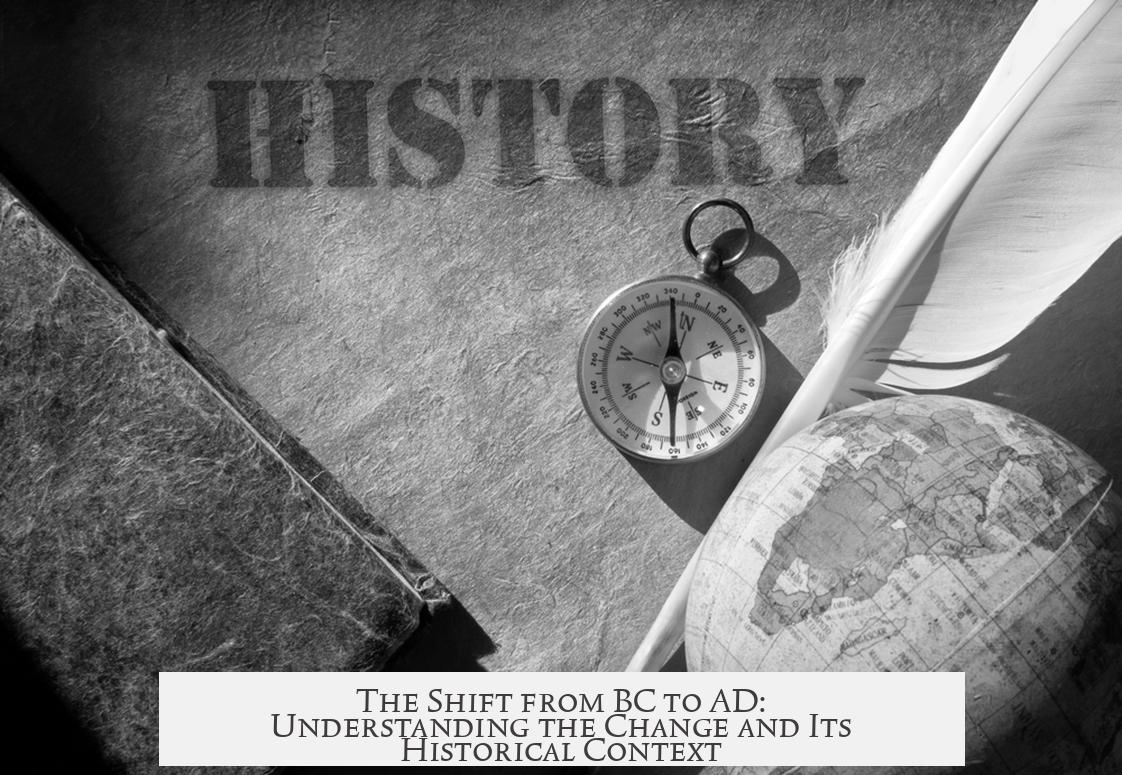The switch from BC (Before Christ) to AD (Anno Domini) is tied to the Christian calendar system that counts years from the birth of Jesus Christ. This system, developed in the 6th century, originally only counted years “in the year of our Lord” and did not have the concept of BC. The year numbering starts at what was traditionally believed to be the birth year of Jesus. Thus, years before that event are labeled as BC, and years afterward as AD.
The Gregorian calendar, adopted in 1582, formalized this timeline globally. It corrected inaccuracies from the Julian calendar, better aligning the calendar year with the earth’s orbit. The Gregorian calendar bases the year count from what is considered the nativity of Jesus, making AD the dominant method for numbering years forward in time.
Despite Christianity’s influence, the BC/AD system gained widespread use across cultures due to European colonial and global influence. However, in recent decades, many scholars and institutions favor BCE (Before Common Era) and CE (Common Era) instead. These terms correspond directly to BC and AD but remove explicit Christian references, accommodating a multicultural and multi-faith world.
The idea that the “switch” happened only recently, such as 2013 years ago, may stem from confusion about when the AD system started counting years or misunderstandings about calendar reforms. The AD calendar has been in continuous use since its creation. Awareness of millennia, such as the 2000th year of AD, became culturally significant during the transition to the new millennium in 2000.
The timeline can be summarized:
- 6th century: AD system introduced by Dionysius Exiguus, starting the year count at Jesus’ birth.
- Pre-1582: Julian calendar widely used with the AD system gaining traction.
- 1582: Gregorian calendar adopted, fixing calendar drift and maintaining AD counting.
- Modern times: Shift toward BCE/CE terminology reflects cultural sensitivity.
- 2013 years ago: Roughly aligns with AD1, but AD began as a concept in the 6th century.
In summary:
- BC/AD system began in the 6th century, not suddenly 2013 years ago.
- The Gregorian calendar maintains AD numbering from Jesus’ birth.
- The modern switch to BCE/CE is for cultural neutrality, not a calendar overhaul.
- Millennium awareness marks milestones but not a switch in calendar systems.
Why Did We All Of A Sudden Switch From BC To AD 2013 Years Ago?

Let’s cut straight to it: We didn’t suddenly switch from BC to AD 2013 years ago—rather, the BC/AD system emerged gradually, rooted in Christian tradition, and only later became a global standard thanks to calendar reforms and historical consensus. The year “2013 AD” marks a progression in a calendar based on these traditions, not an overnight swap.
So why does everyone suddenly think of years in terms of BC and AD? And why did this change seem so dramatic, especially around our “modern times”? Let’s dig deeper to unravel this calendar mystery.
Origin and Meaning of BC/AD
Here’s the original idea: BC> stands for Before Christ, and AD stands for Anno Domini (Latin for “in the Year of Our Lord”), marking years after the supposed birth of Jesus. The system was invented in the 6th century by a monk named Dionysius Exiguus. Now, keep in mind—when he created this system, he didn’t actually use BC because his work was focused on counting years from Christ onward. It was later that historians added BC to refer to the time before Jesus’s birth.
Jesus was a huge influence culturally and religiously at that time, so the calendar naturally centered on the year he was believed to be born. It’s fascinating to consider that this entire global timekeeping system is based on the life of one religious figure!
A Quick History of Calendars

Before the Gregorian calendar, ancient Rome used the Julian calendar, introduced in 46 B.C. This calendar made life easier but wasn’t perfect. It assumed the Earth’s rotation took exactly 365.25 days, but it’s a tad off—that’s why leap years in the Julian calendar slowly drifted out of sync with seasons and moons.
Enter the Gregorian calendar in 1582. It’s the system most of the world uses today. The Pope at the time (Gregory XIII) tweaked the Julian calendar to better reflect the actual solar year. That included redefining leap years, which corrected the drift and made the year count more accurate.
So, when people started celebrating Christmas and marking years according to this improved calendar, AD years became even more standardized. This calendar aligns years with Christ’s birth, hence, years today like 2013 AD.
But Why “Switch” and When?
Did everyone suddenly wake up one day and decide “Hey, let’s use AD”? Not quite.
Most ancient civilizations had their own calendar systems. Romans had their calends, Egyptians had theirs, and many others used lunar or agricultural calendars. The BC/AD system gained traction through the influence of Christian Europe and colonization. The world started adopting this system as European explorers, traders, and missionaries spread their calendar globally.
By the time we hit 2013 AD, this system simply reflected 2013 years since the estimated birth of Christ. It wasn’t a dramatic switch happening 2,000 years ago but the cumulative result of calendar standardization and Christian influence.
The Shift to BCE/CE

In modern multicultural societies, especially in academic and diplomatic contexts, people often use BCE (Before Common Era) and CE (Common Era) instead of BC and AD. This switch aims to keep the same year numbering but avoid Christian-centric terms.
This reflects a broader awareness of cultural diversity and secularism today. While BCE/CE doesn’t change the numbering of years, it is seen as more neutral and inclusive. So, if someone says “2013 CE,” they mean the same year as “2013 AD” without religious reference.
Millennials, Millennium, and the New Era Anxiety
Remember the big hype about the “Year 2000” and the millennium? It’s quite interesting—some people celebrated the turn of the millennium, recognizing 1,000 years since AD 1000 (or the 2,000th year since AD 1). Others argued the millennium technically waited until 2001 because there was no year zero in this system. As you can imagine, calendars can get tangled when we try to slice time so precisely.
This debate highlights how tied we are to the calendar and how seriously we take year counts—yet few realize the system is merely a human convention shaped by history, religion, and politics.
Practical Example: Why It Matters

Imagine you’re tracking historical events in a history class or doing genealogical research. Knowing why and how the BC/AD system came about helps you place events on a global timeline accurately. If you didn’t know, you might be tempted to think that everything before “2013 years ago” was forever disconnected or unaligned with current calendars.
However, it’s just our modern way of understanding and standardizing historical time. Before global synchronization, people often referenced years by rulers’ reigns or major events, making cross-era comparisons tricky.
Wrapping It Up
In short: The BC/AD system didn’t suddenly appear 2013 years ago. It developed gradually, rooted in Christian tradition, and later became the international standard thanks to calendar reforms like the Gregorian calendar. The years count forward from Jesus’s supposed birth, which is why you hear 2013 AD today.
Today, some use BCE/CE for inclusivity, but the principle remains the same—a shared numbering system to keep us all synchronized. It’s a blend of history, religion, science, and cultural shifts.
Here’s a little food for thought: What if instead of counting years from one historical figure, we tracked time from another universal event—like the invention of the wheel or the internet? Would our anniversaries be quite so dramatic? Would we panic over Y2K-like events with the same passion?
Something to chew on next time your calendar flips to a new year!
Why do we use BC and AD to mark years?
BC means Before Christ, and AD stands for Anno Domini, which means “In the Year of Our Lord.” This system counts years from the traditional date of Jesus’s birth.
When did the switch from BC/AD to BCE/CE start?
The shift to BCE (Before Common Era) and CE (Common Era) began as a way to avoid Christian references in a multicultural world. It is now considered more correct in many contexts.
Why is the Gregorian calendar important for BC and AD dating?
The Gregorian calendar, introduced in 1582, counts years based on the birth of Jesus. It fixed problems in the earlier Julian calendar and became the global standard.
Did people notice the millennium change 2013 years ago?
Many did not. Few recognized the exact thousand-year mark from Christ’s birth, as different cultures used other calendars and fewer people tracked it closely then.
Why was the Julian calendar replaced by the Gregorian one?
The Julian calendar didn’t account properly for the Earth’s orbit around the sun. This caused the calendar dates to drift, so the Gregorian calendar fixed this with leap years.




